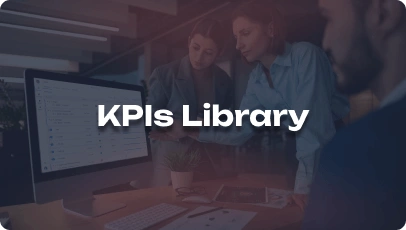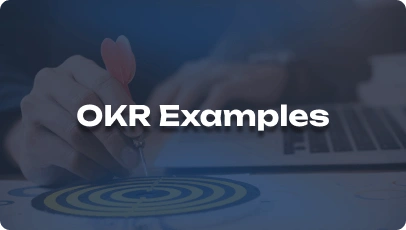Public Health Professionals play a crucial role in the Public Health/Government industry by implementing strategies to protect and improve the health of communities. Mastering this field is essential for addressing public health challenges, promoting preventative measures, and ensuring the well-being of populations.
1. Can you explain the importance of data analysis in public health decision-making?
Data analysis helps identify trends, assess outcomes, and guide evidence-based interventions in public health settings.
2. How do you stay informed about current public health trends and issues?
I regularly attend conferences, subscribe to industry publications, and participate in webinars to stay updated on the latest trends.
3. What are some key differences between public health initiatives at the local, state, and federal levels?
Local initiatives focus on community-specific needs, while state and federal levels provide overarching policies and funding for larger-scale interventions.
4. How do you approach collaborating with other government agencies or organizations to address public health challenges?
I emphasize communication, establish common goals, and leverage each partner’s strengths to create effective collaborations.
5. Can you discuss a successful public health intervention you implemented and its impact on the community?
I led a vaccination campaign that increased immunization rates by 20% in a high-risk community, resulting in a significant decrease in preventable diseases.
6. How do you assess the effectiveness of public health programs or interventions?
I use a combination of qualitative and quantitative data analysis, including monitoring key performance indicators and conducting impact evaluations.
Community engagement fosters trust, promotes cultural sensitivity, and ensures that interventions are tailored to meet the unique needs of the population.
8. How do you navigate ethical dilemmas in public health practice?
I adhere to ethical principles, seek guidance from ethical committees, and prioritize transparency and informed consent in decision-making processes.
9. What are the challenges of implementing public health policies in a diverse population?
Cultural differences, language barriers, and varying health literacy levels can pose challenges in effectively implementing public health policies across diverse populations.
10. How do you approach public health emergency preparedness and response planning?
I develop comprehensive emergency response plans, conduct drills and simulations, and collaborate with stakeholders to ensure a coordinated and timely response to public health emergencies.
11. Can you discuss the role of technology in modern public health practice?
Technology facilitates data collection, surveillance, and communication in public health, enabling faster response times and more targeted interventions.
12. How do you advocate for public health funding in a resource-constrained environment?
I emphasize the return on investment of public health programs, showcase successful outcomes, and communicate the long-term benefits of investing in preventative measures.
13. What strategies do you use to address health disparities in underserved communities?
I collaborate with community leaders, implement culturally competent interventions, and advocate for policies that address the social determinants of health in underserved populations.
14. How do you approach public health communication to ensure messages are clear and effective?
I use plain language, tailor messages to the target audience, and leverage various communication channels to reach diverse populations.
15. Can you discuss a time when you had to adapt public health strategies to respond to a public health crisis?
During a disease outbreak, I quickly adjusted intervention strategies based on real-time data, coordinated with stakeholders, and communicated updates transparently to the public.
16. How do you prioritize public health initiatives when faced with limited resources?
I conduct cost-benefit analyses, prioritize interventions with the highest impact, and seek alternative funding sources to maximize resources efficiently.
17. What role do social determinants of health play in shaping public health outcomes?
Social determinants of health, such as income, education, and access to healthcare, significantly influence health outcomes and disparities within populations.
18. How do you address vaccine hesitancy and misinformation in public health campaigns?
I provide evidence-based information, address concerns empathetically, and engage with community influencers to build trust and increase vaccine acceptance.
19. Can you discuss the impact of climate change on public health and potential mitigation strategies?
Climate change poses risks to public health through extreme weather events, air pollution, and the spread of vector-borne diseases, requiring adaptation measures and sustainable policies.
20. How do you assess the health needs of a specific population before designing interventions?
I conduct community health assessments, analyze epidemiological data, and engage with key stakeholders to understand the unique health needs and challenges of the population.
21. What strategies do you use to promote healthy behaviors and prevent chronic diseases in communities?
I implement health education programs, create supportive environments for healthy choices, and collaborate with partners to address the root causes of chronic diseases.
22. How do you ensure equity and fairness in the distribution of public health resources and services?
I use a health equity lens to guide resource allocation, prioritize marginalized communities, and advocate for policies that reduce disparities in access to healthcare services.
23. Can you discuss a time when you had to manage a public health crisis and the lessons learned from the experience?
During a foodborne illness outbreak, I coordinated with multiple agencies, communicated effectively with the public, and improved response protocols based on the experience.
24. How do you engage with policymakers to advocate for evidence-based public health policies?
I provide policymakers with data-driven recommendations, highlight the public health impact of proposed policies, and build relationships to influence decision-making processes.
25. What strategies do you use to evaluate the impact of health education programs on behavior change?
I conduct pre- and post-program assessments, track key performance indicators, and engage participants in feedback mechanisms to measure behavior change outcomes.
26. How do you incorporate cultural competence in public health practice when working with diverse populations?
I seek input from community members, respect cultural norms and practices, and tailor interventions to be culturally relevant and sensitive to diverse populations.
Community partnerships enable shared resources, expertise, and perspectives to address complex public health challenges collaboratively and sustainably.
28. How do you address mental health stigma and promote mental well-being in public health programs?
I raise awareness about mental health issues, provide education on stigma reduction, and advocate for policies that support mental health services and resources.
29. What strategies do you use to engage hard-to-reach populations in public health initiatives?
I collaborate with trusted community leaders, use targeted outreach strategies, and provide culturally appropriate services to engage and empower hard-to-reach populations.
30. How do you stay resilient and maintain motivation when facing challenges in public health practice?
I practice self-care, seek support from colleagues, and focus on the positive impact of my work on improving the health and well-being of communities to stay resilient and motivated.







